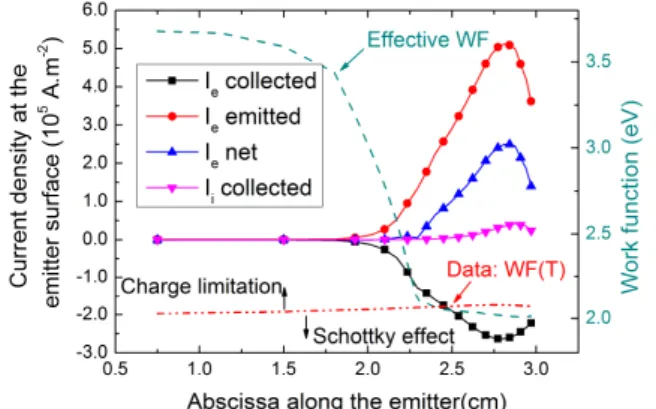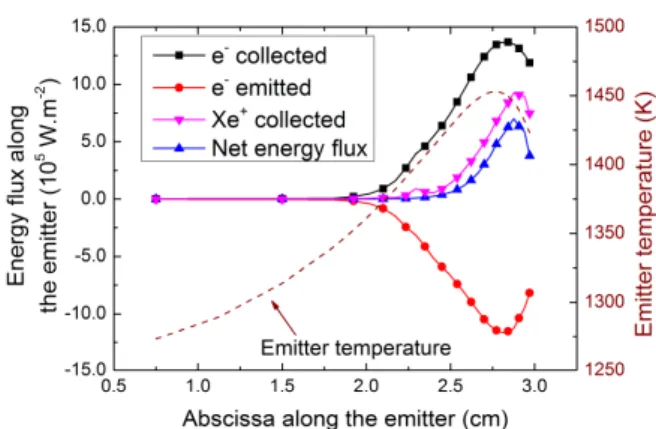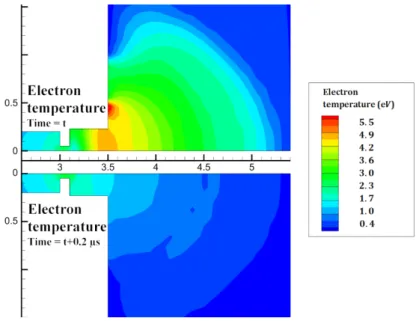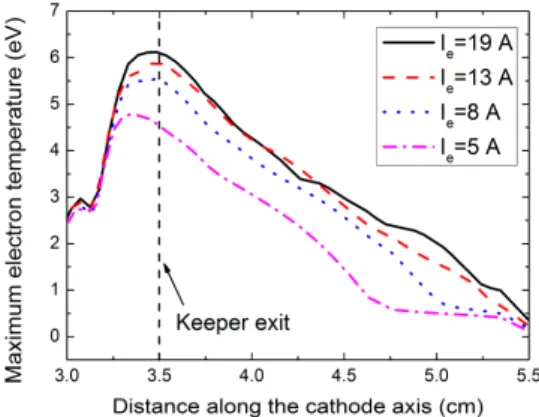Hollow cathode modeling: II. Physical analysis and parametric study
Texte intégral
Figure
![Figure 1: Simulated emitter temperature distribution (coupled model) and measurements taken from [7] for the NSTAR cathode running at the 15 operating point ( = 13 and = 3.6 )](https://thumb-eu.123doks.com/thumbv2/123doknet/14373022.504650/5.892.288.573.493.697/figure-simulated-emitter-temperature-distribution-coupled-measurements-operating.webp)
![Figure 2: Simulated plasma density (a) and plasma potential (b) in the coupled model along the axis of the NSTAR cathode running at the 15 operating point ( = 13 and = 3.6 ) and comparison with experimental data [2] and with](https://thumb-eu.123doks.com/thumbv2/123doknet/14373022.504650/6.892.116.754.212.448/figure-simulated-density-potential-coupled-operating-comparison-experimental.webp)


Documents relatifs
2014 Spatially resolved spectroscopic diagnostics such as plasma-induced emission, laser-induced fluorescence and laser optogalvanic spectroscopy are used to
To analyse the possible consequences of ignoring molecular ions and the related reactions, two models were constructed: the first one is equipped with the complete set of species
Because the EEDF as well as the population densities of the excited states and molecular ions and excimers were not measured and the initial electron density could not be measured
sufficiently wide ranges for the first time... A typical set of CVC of a planar discharge cell for different illumination intensities of the semiconducting cathode. Curves 11,
Then the power is decreased 100 times so that the fast signal disappears and only the slow one is detectable (Figure 5(c) and 5(d)) 4t last (Figure 5(e)) the second laser is
Different atomic velocity groups can be selected by changing the wavelength of the fixed laser within the Doppler profile.. We think that the good signal to noise ratio observed
L’archive ouverte pluridisciplinaire HAL, est destinée au dépôt et à la diffusion de documents scientifiques de niveau recherche, publiés ou non, émanant des
L’archive ouverte pluridisciplinaire HAL, est destinée au dépôt et à la diffusion de documents scientifiques de niveau recherche, publiés ou non, émanant des





![Figure 11: Axial magnetic field magnitude along the axis of the cathode inside the discharge chamber of the NSTAR thruster (taken from [14])](https://thumb-eu.123doks.com/thumbv2/123doknet/14373022.504650/19.892.287.573.208.423/figure-axial-magnetic-magnitude-cathode-discharge-chamber-thruster.webp)